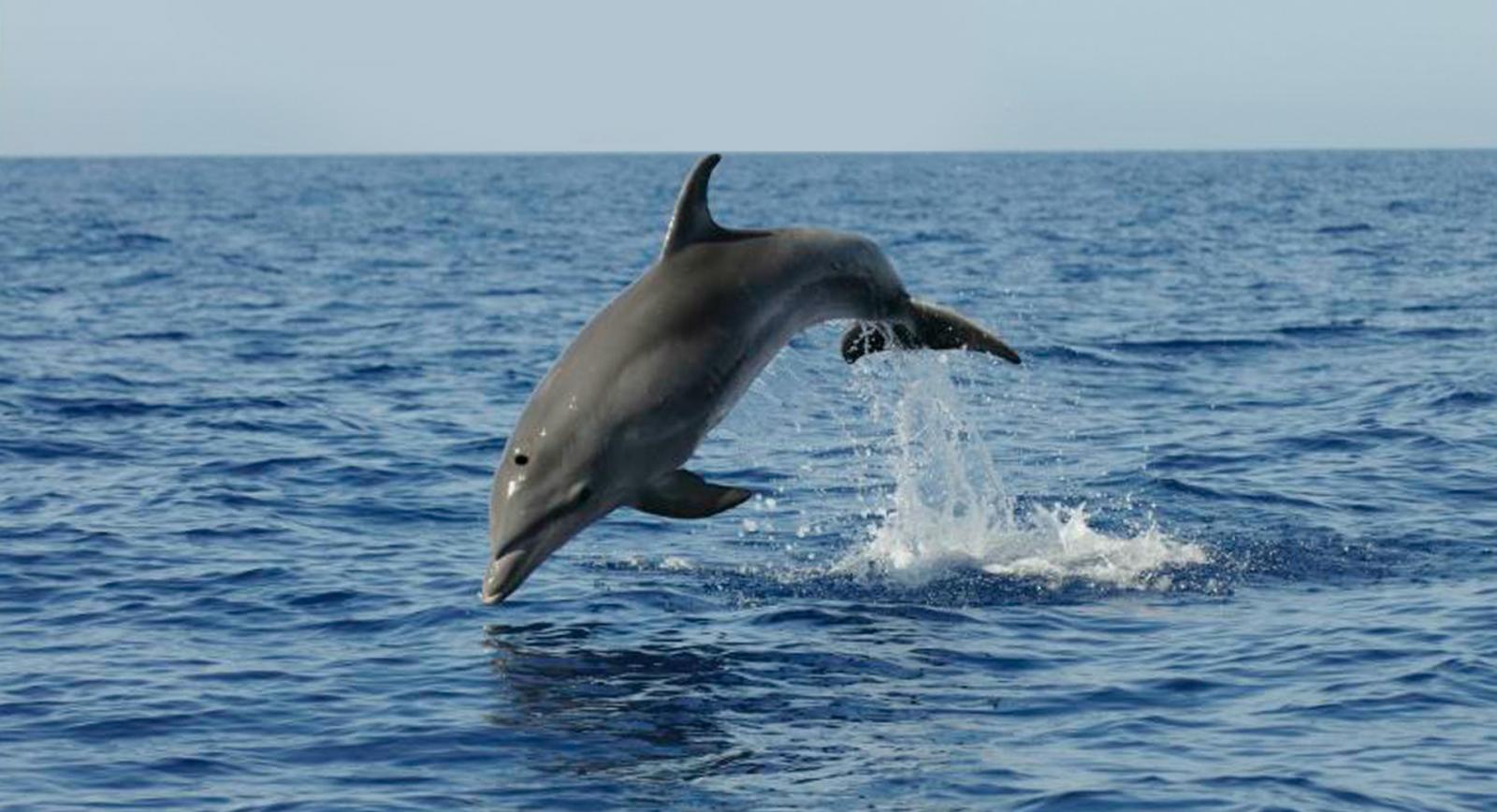The richness of the Canary Islands seabed combined with the transparency and excellent temperature of the water, an average of 19 °C in winter and 25 °C in summer, attracts many marine animals. The great benefit of the archipelago in comparison with other places where you can go whale watching is that many of these animals live here permanently. They are called a resident species.
This means that you can find almost 30 different species in the Canary Islands, including the blue whale and dolphins. Their presence is so frequent that the islands have become the most important place in Europe for watching them in the wild. Your family will never forget the experience of seeing these mammals in their natural habitat.
Dolphins
In the Canary Islands, you can see up to six species of these marine mammals, considered some of the most intelligent animals on the planet. It has become a very frequent pastime for islanders to go dolphin watching at dawn, either on boats or even from some points along the coast.
The pilot whale
The largest type of dolphin is very commonly found in the waters of the archipelago because this species lives here permanently. This tremendously friendly animal always travels in groups, interacting and playing with the others members of their pod. As they are so sociable, it is not unusual for them to frequently swim up alongside boats.
Cachalot
The cachalot, which can grow to a length of up to 20 metres, is one of the largest mammals in the world. Although they can be found in the Canary Islands, they are not seen so frequently because they spend a lot of time underwater. When they are looking for food, they can stay under for up to 35 minutes and dive to a depth of 3 kilometres.
Rorqual
This is the most diverse and varied family of baleen whales and includes the humpback whale, which is an habitual resident of the Canary Islands and can measure anywhere up to 16 metres in length. They are easy to recognise, due to their peculiar shape. In addition to their baleens, they have a very characteristic hump that differentiates them from other cetaceans.
Guaranteed freedom and protection
The boats used for whale and dolphin watching have the Barco Azul (blue boat) logo, a seal that shows that they comply with regulations and legislation to ensure that the marine reserves are respected and to guarantee the protection of the animals that live in the waters of the Canary Islands.
A paradise for marine fauna
Enthusiasts that wish to experience seeing whales and dolphins in their natural habitat must always follow the recommendations of professionals from this sector in the Canary Islands, who are familiar with how these marine animals behave and will guide you through the crystal-clear waters at any time of year.

























